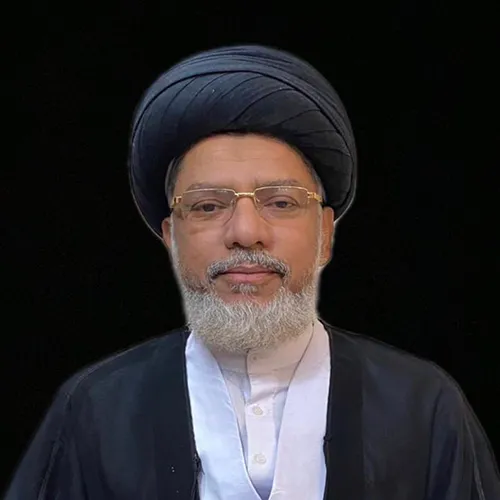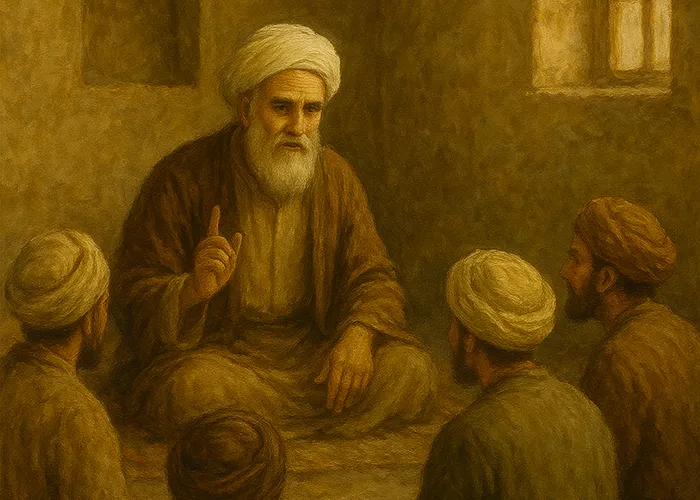Ḥujjat al-Islām Sayyid Ḥaydar Razā Rizvi
Idara-e-Jaffariya is one of the oldest Shia institutions in London and has hosted numerous Friday Imams over the years. Among its most experienced and dedicated figures is Ḥujjat al-Islām Sayyid Ḥaydar Razā Rizvi. While the majority of its congregation is of Pakistani background, the centre is known for its diverse and multicultural attendance.
The theme of our conversation with him continues to be coloured by the spirit of Muḥarram.
- What has your experience been like as a Friday Imam?
Friday prayer is not only a form of worship but also a political gathering, as described by Imam Khomeini (may Allah have mercy on him), who said: “Friday prayer is a fortress of Islam.” It can serve as a university—a space for the moral and intellectual development of young Muslims through the lens of pure Muḥammadan Islam. This is a great opportunity in the hands of Friday Imams.
I have served as a Friday Imam in various Shia centres in London for over thirty years. In 1991, I was invited by the Idara-e-Jaffariya—one of the oldest and most well-known Shia centres in South London—to serve as their Imam, a position I held for at least ten years.
During my seminary studies, I undertook the translation of notable works into Urdu, including Greater Sins (Gunāhān-i-Kabīrah) and Barzakh by the martyred Ayatollah Dastghaib. I also translated Economics in Islam by Āyatullāh Mahdī al-Āṣifī. Later, I taught at the al-Zahrā School in Karachi, Pakistan.
In 1991, I served as a Friday Imam in Africa. Currently, I lead Friday and daily congregational prayers at the Shuhadā-ye Karbala Mosque and Ḥusayniyyah in North London. In addition to my Friday duties, I dedicate 4 to 7 hours daily to teaching Qur’an online. On Saturdays, I serve as the principal of a South London Islamic school. I have also served for several years as the General Secretary of the Council of Shia Scholars in Europe.
- What is the core message of ʿĀshūrāʾ?
The message of ʿĀshūrāʾ lies in two profound statements.
The first comes from Imam Ḥusayn (peace be upon him) himself:
“If the religion of Muḥammad will not survive except through my death, then O swords, come and take me!”
This means one must not withhold life or wealth in defence of the true religion of Islam.
The second message is in his declaration:
“Someone like me will never pledge allegiance to someone like him.”
If you are of the path of Ḥusayn, you must never surrender to a Yazid. But to act upon this, we must first discern: which side is truly that of Ḥusayn and authentic Islam? And which side is the camp of disbelief and hypocrisy?
- What books would you recommend to young Muslims in Europe to understand the message of ʿĀshūrāʾ?
There are many publications on Karbala and the events of ʿĀshūrāʾ, far too many to name here. However, in my view, the following are especially beneficial for study and reflection:
- The Epic of Ḥusayn (Ḥamāsah-ye Ḥusaynī) by Shahīd Muṭahharī
- Discourses on ʿĀshūrāʾ (Goftār-e ʿĀshūrāʾ) also by Shahīd Muṭahharī
- The Treatise of Karbala (Ṣaḥīfah-ye Karbalāʾ) by Ḥujjat al-Islām ʿAlī Naẓarī Munfarid
These works provide valuable insight and are impactful for youth seeking to understand the deeper meanings of ʿĀshūrāʾ.
- What is the philosophy behind causing division among Muslims?
The philosophy behind division among Muslims is to weaken their religious identity and undermine the foundation of Islam. By fuelling tensions over minor differences between Islamic schools of thought, the enemies of Islam create conflict and fishes in troubled waters.
These divisions can occur even within different Shia communities, or between Sunni sects, or of course, between Sunnis and Shias. It is a destructive strategy rooted in colonial manipulation. The enemy achieves maximum disruption with minimal investment through this method.
- Digital media and virtual platforms are the main battlegrounds of the modern “soft war”. How can one recognise this war? Could you give an example?
The first step in recognising the soft war is to distinguish between friend and enemy. When you allow yourself to be exposed to enemy media, you inevitably become entangled in its propaganda. The enemy cunningly feeds discouraging and despairing news to its audience.
Even if you are intelligent and familiar with the agenda of these media outlets, their negative news can still affect your mental and emotional state, leading to hopelessness and anxiety. This is how belief systems are gradually and subtly altered. As the name suggests, both the weapon and the method of influence in this war are soft and subtle.
The solution? Stay away. Be alert. Do not waste your time consuming the enemy’s content. Do not sit at the table of the enemy. Protect your mind and soul.
editor's pick
news via inbox
Subscribe to the newsletter.




